Join our Larry McDonald on CNBC’s Trading Nation, Wednesday at 2:20pm.
Over the last week U.S. financial media went on a typical “scare and click” campaign against President-elect Donald Trump’s foreign trade counsel, led by University of California Irvine professor Peter Navarro. Over the last 15 months its now very clear media outlets have used drama and scare tactics in an effort to drive traffic to their websites. Donald Trump has been a savior in terms of giving many financially strapped media players a boogieman to throw around, in an effort to collect eyeballs of course.
“This is a negative trade message, and we should be concerned” as the appointment will disturb China-U.S. trade relations, said He Weiwen, deputy director of the Beijing-based Center for China and Globalization. “If there’s a trade war breaking out between China and the U.S., both would be affected, but the U.S. side would lose more.” Bloomberg reported Weiwen’s comments.
“Trump’s tariffs will make almost everything more expensive — and maybe cost you your job.”
Money.Mic’s Emily Singer
US Personal Consumption Expenditure Core Price Index YoY
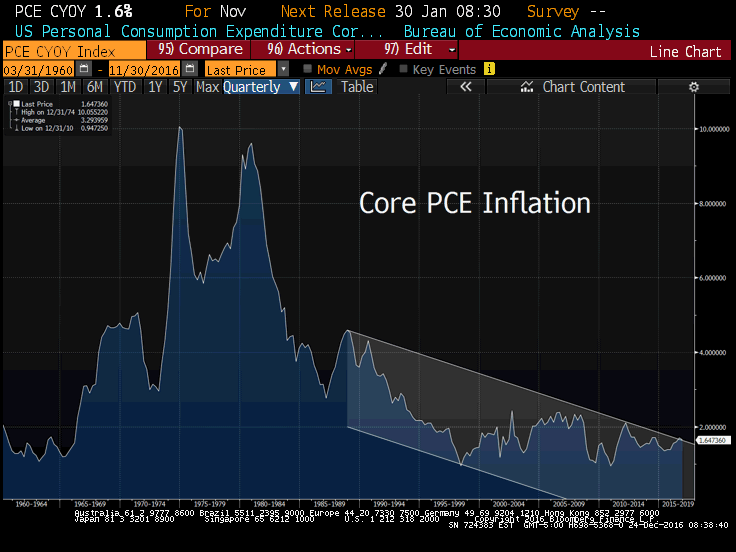
With the exception of March 2012, core PCE inflation has not been above 2% since September 2008. The Fed sees core PCE greater than 2% as early as a year from now. As you can see above, secular stagnation has placed core PCE inflation is a multi year secular down trend. As we head towards a Trump Presidency, markets are pricing in aggressive trade tariffs fired at China. Cheap goods imported into the USA have been a benefit to the U.S. consumer, but a detriment to the U.S. manufacturing base. Any interruption in terms of trade tariffs will result in higher prices of goods.
U.S. Treasuries’ Yield vs. Inflation Expectations
U.S. 5yr 5yr Forward Breakeven vs the 10 Year Bond Yield
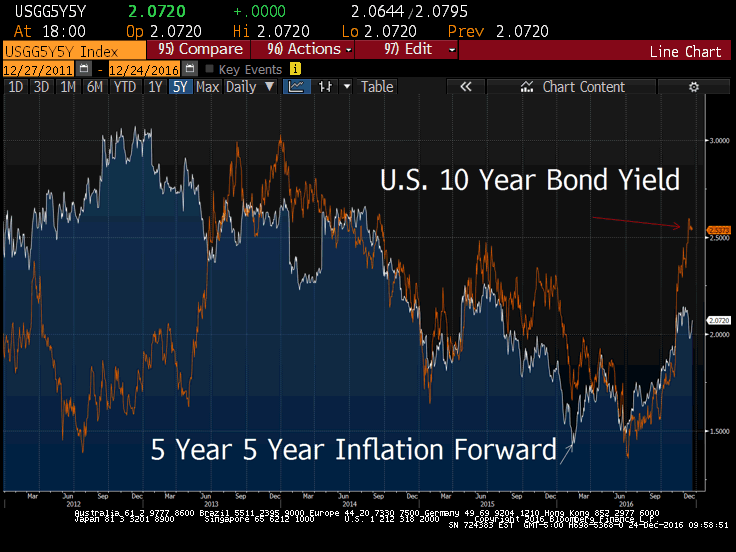
There are many methods of varying complexity that investors and policymakers use to estimate the level of expected inflation, but one relatively straightforward method is to examine the “breakeven” inflation rate which is the difference in interest rates between Treasuries and TIPS. This method has the advantage of being determined by market prices, so it reflects the views of investors who have money on the line.
The Road Ahead
“Trump will impose countervailing tariffs not just on China, but on any American trade partner that cheats on its trade deals using practices such as currency manipulation and illegal export subsidies. Such tariffs are not protectionist but rather defensive — and consistent with actions taken by American presidents from George Washington to Ronald Reagan. Indeed, one of the first bills Washington signed was a tariff, which Alexander Hamilton justified as a necessary defense against a mercantilist Europe.”
Peter Navarro, 2016
A recently released study written by Wilbur Ross and Peter Navarro dives into the underlying issues behind secular stagnation. The assumed, incoming protectionist trade stance of the Trump administration has been well advertised. Negative press coverage of Trump’s potential trade policies out numbers positive 8-1, a review by the Bear Traps Report shows. In our view, the media is far too focused on trade tail risk, and not enough focused on trade deal upside for the U.S. economy. In reality, why does a shot (40% trade tariff) actually have to be fired? The meltdown trade scenario has been well advertised by CNN, MSNBC and the Huffington Post.
China’s economy is in its 7th year of lower year over year GDP contraction. Their banking system is the most highly leveraged on earth, they are in no position to take big trade risks. They likely do a deal.
China Trade
A leading economist with a doctorate from Harvard, Navarro has spent much of his career criticizing China. Over a career of more than two decades, he has written books and directed a documentary on the U.S.-China trade relationship that helped form the backbone of the Trump campaign message on a pivotal election issue that played to globalization fears.
“export licenses had formerly been more difficult to obtain in some industries than others, their removal may have led to a surge in Chinese exports and subsequent decline in U.S. manufacturing employment in the industries where licensing was most binding.”
Ross – Navarro, 2016
Secular stagnation is a condition of negligible or no economic growth in a market-based economy. When per capita income stays at relatively high levels, the percentage of savings is likely to start exceeding the percentage of longer-term investments in, for example, infrastructure and education, that are necessary to sustain future economic growth. The absence of such investments (and consequently of the economic growth) leads to declining levels of per capita income (and consequently of per capita savings). With the reduced percentage savings rate converging with the reduced investment rate, economic growth comes to a standstill – ie, it stagnates. In a free economy, consumers anticipating secular stagnation, might transfer their savings to more attractive-looking foreign countries. This would lead to a devaluation of their domestic currency, which would potentially boost their exports, assuming that the country did have goods or services that could be exported.
Persistent low growth, especially in Europe, has been attributed by some to secular stagnation initiated by stronger European economies, such as Germany, in the past few years.
Ross and Navarro are quite explicit in their introduction that trade deficits have been a critical inhibiter of economic growth. Simply states, key contributor to GDP has been the lag in net exports. Another element is that he uses trade deficit reduction and trade policy reforms is for the revenue offset of substantial tax cuts. As a whole we found the paper to be EXTREMELY trade hawkish, a firm defensive trade position is coming to the White House.
Don’t miss our next trade idea. Get on the Bear Traps Report Today, click here
Where are bond yields going with debt on the rise? Click here for our latest report.
Secular Stagnation
GDP in Decline since the Late 70s
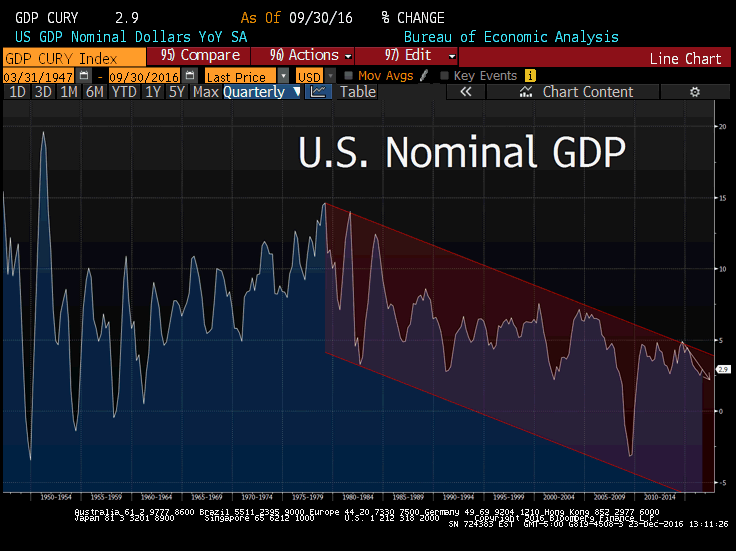
U.S. nominal GDP is in a long term secular decline, the Trump administration hopes to reverse the impact of secular stagnation.
“There is nothing inevitable about poorly negotiated trade deals, over-regulation, and an excessive tax burden – this is a politician-made malaise. Therefore, nothing about the “new normal” is permanent. ”
Ross – Navarro, 2016
The New Normal
Ross and Navarro point out, from 1947 to 2001, the nominal US gross domestic product (GDP) grew at an annual, rate of 3.5% a year. However, from 2002 to today, that average has fallen to 1.9%. This loss of 1.6% real GDP growth points annually represents a 45% reduction of the US growth rate from its historic, pre-2002 norm. Just why did the US growth rate fall so dramatically?
Over the last eight years, the U.S. didn’t achieve one year of year over year +3% growth. That has not happened in nearly 100 years.
U.S. Real Year over Year Annual GDP
2016: 1.9%
2015: 2.6%
2014: 2.4%
2013: 1.7%
2012: 2.2%
2011: 1.6%
2010: 2.5%
2009: -2.8%
2008: -0.3%
2007: 1.8%
2006: 2.7%
2005: 3.3%
2004: 3.8%
2003: 2.8%
2002: 1.8%
2001: 1.0%
2000: 4.1%
1999: 4.7%
1998: 4.5%
1997: 4.5%
1996: 3.8%
1995: 2.7%
1994: 4.0%
1993: 2.7%
1992: 3.6%
- Above 3% year over year growth is in blue
Bloomberg, CBO data
Don’t miss our next trade idea. Get on the Bear Traps Report Today, click here
Where are bond yields going with debt on the rise? Click here for our latest report.
Many left-of-center economists – and the Obama Administration – have described this era of slower growth as the “new normal.” They blame this plunge at least in part on demographic shifts such as a declining labor force participation rate and the movement of “baby boomers” into retirement. This view of America’s economic malaise is incomplete – and unnecessarily defeatist. It ignores the significant roles higher taxes and increased regulation have played in inhibiting US economic growth since the turn of the 21st century as well as our ability to fix the problems.
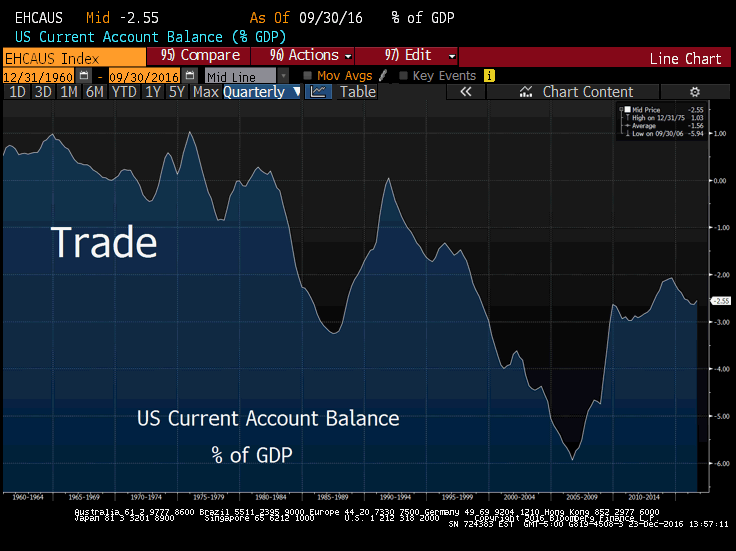 As a % of GDP, the U.S. trade deficit is still in a long term secular down trend.
As a % of GDP, the U.S. trade deficit is still in a long term secular down trend.
This new normal argument also ignores the self-inflicted negative impacts from poorly negotiated trade deals and the failure to enforce them. One need look no further than the lengthy list of transgressions detailed in the National Trade Estimate for examples. These bad deals include most notably NAFTA, China’s entry into the World Trade Organization in 2001 – a critical catalyst for America’s slow growth plunge – and most recently Hillary Clinton’s debilitating 2012 South Korea trade deal.
To view the rest of this report, trade winners and losers in 2017, click here:
Don’t miss our next trade idea. Get on the Bear Traps Report Today, click here
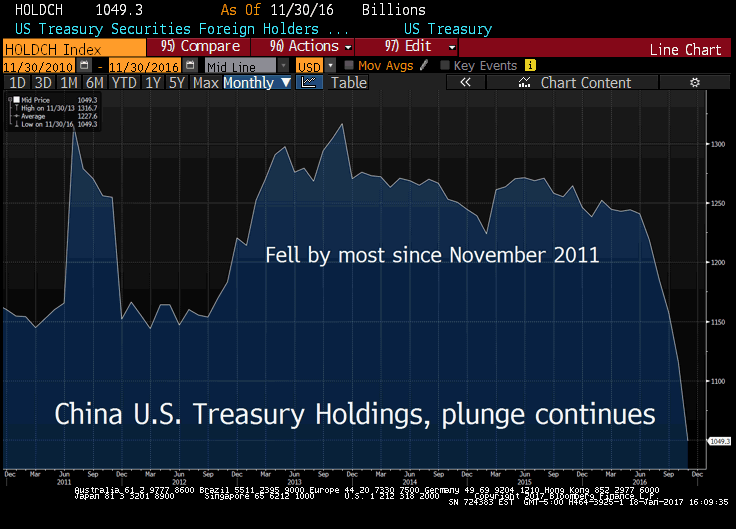 The question is, does it make sense for China to keep selling treasuries at such a fast level? We think not. By selling treasuries, the Chinese are only sending yields higher in the U.S. which supports a stronger Dollar, something the Chinese cannot afford. A big question for 2017 will be, do the Chinese continue selling off treasuries, or does the fear of further depleting reserves and raising the Dollar put them off. Pick up our latest report, just click on the link below.
The question is, does it make sense for China to keep selling treasuries at such a fast level? We think not. By selling treasuries, the Chinese are only sending yields higher in the U.S. which supports a stronger Dollar, something the Chinese cannot afford. A big question for 2017 will be, do the Chinese continue selling off treasuries, or does the fear of further depleting reserves and raising the Dollar put them off. Pick up our latest report, just click on the link below.
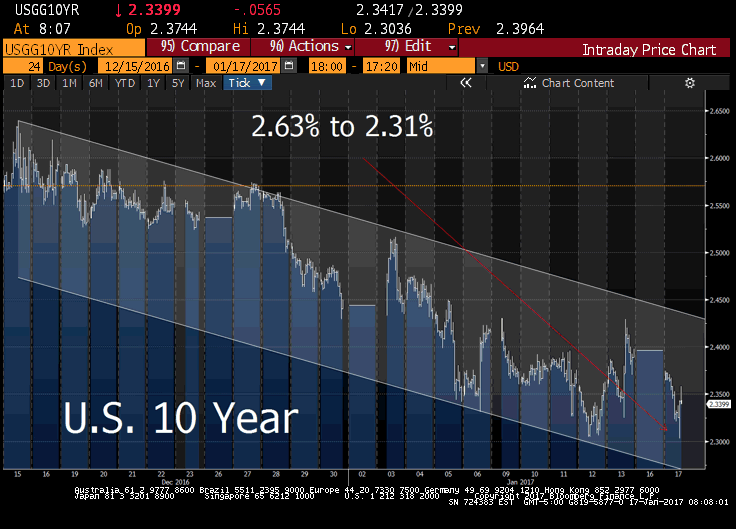 Just when Wall St. told you to “get out of bonds” we’ve experienced one of the most significant rallies in recent years. As bond prices rise, yields move lower, 32bps in 24 days is impressive indeed. The weaker Dollar, stronger Pound is helping today.
Just when Wall St. told you to “get out of bonds” we’ve experienced one of the most significant rallies in recent years. As bond prices rise, yields move lower, 32bps in 24 days is impressive indeed. The weaker Dollar, stronger Pound is helping today.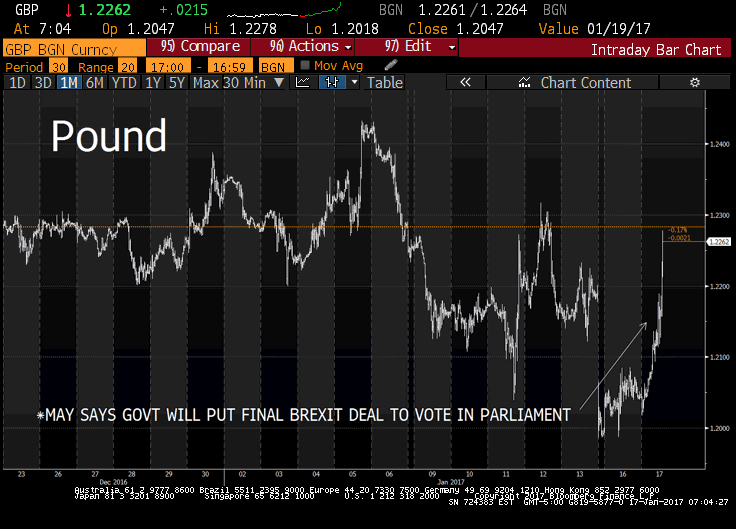
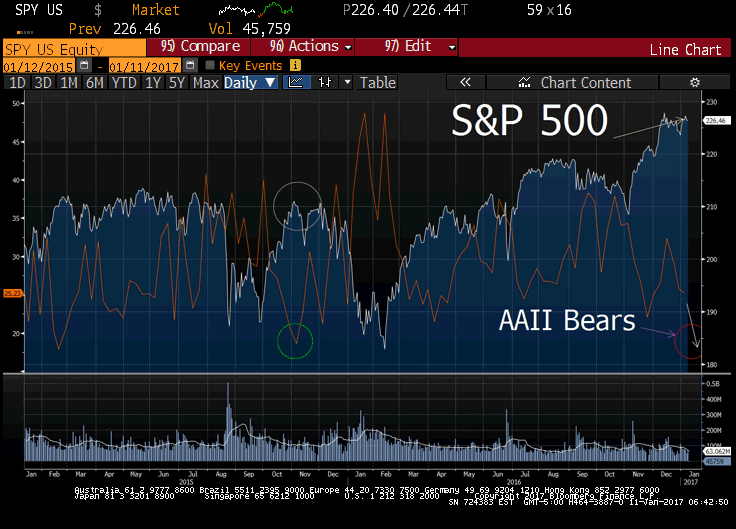 The last time there were this few bears, U.S. equities plunged nearly 13%. We advised our clients to buy stocks aggressively in February (click the link below, we’ll send you the reports) and June of last year, today the risk – reward is NOT attractive in owning stocks. Bears slipped to lowest since Aug. 2015 to 18.3% vs 18.4% last week Correction rises to 7-week high 23.1% from 21.4%. The bottom line, those who beat the market in recent years were buying stocks while others were running away from them. As you can see above, as the bears in peaked in February, stocks bottomed.
The last time there were this few bears, U.S. equities plunged nearly 13%. We advised our clients to buy stocks aggressively in February (click the link below, we’ll send you the reports) and June of last year, today the risk – reward is NOT attractive in owning stocks. Bears slipped to lowest since Aug. 2015 to 18.3% vs 18.4% last week Correction rises to 7-week high 23.1% from 21.4%. The bottom line, those who beat the market in recent years were buying stocks while others were running away from them. As you can see above, as the bears in peaked in February, stocks bottomed. 
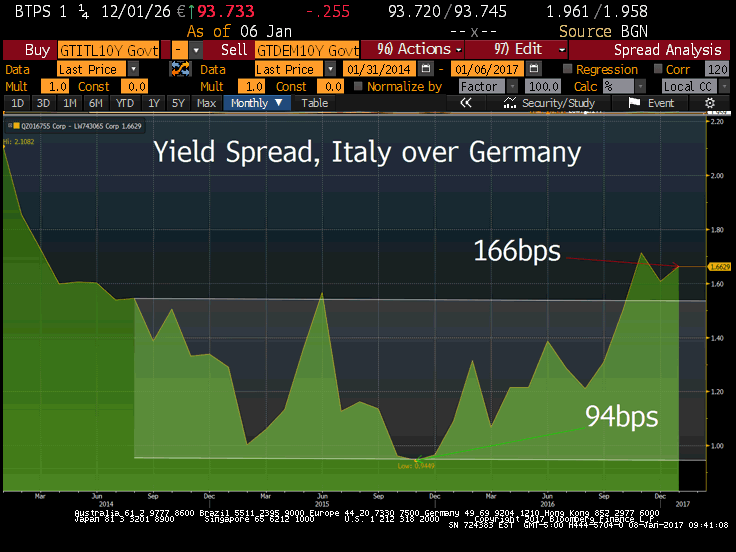
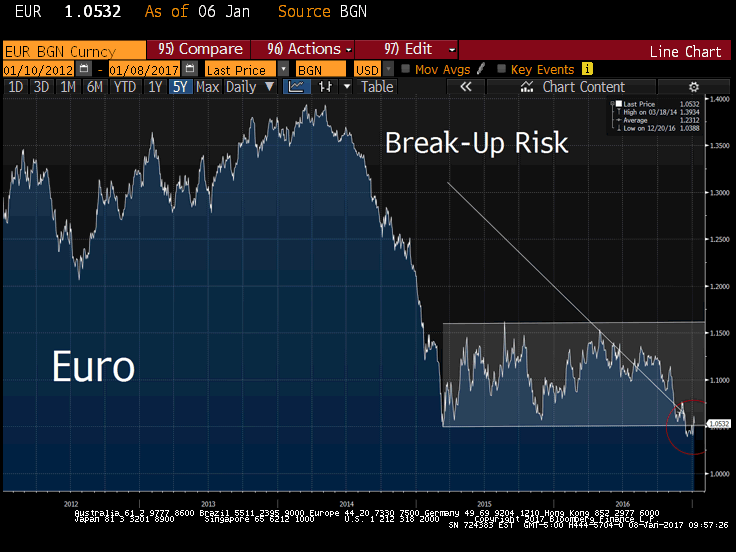
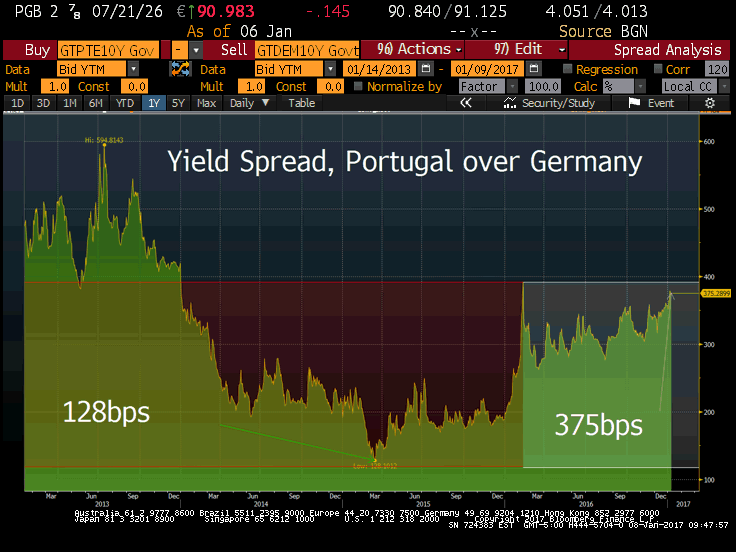 Portugal’s debt to GDP ratio has surged from 50 to 131% since the creation of the Euro, its economy is not growing fast enough to support an aging population and colossal government largess. Similar to Greece, labor unions have been promised unsustainable goodies from politicians. This practice has longer legs when a government can print money to buy votes, but the Euro is clearly killing Portugal. As you can see above, even though the ECB’s Mario Draghi has promised to do “what ever it takes,” as we head toward the German elections, bond holders are nervously selling Portugal’s debt. As we kickoff 2017, credit spread contagion is taking bond yields higher throughout Europe’s periphery, something we witnessed in 2011-2. Back then, eventually U.S. equities were caught up in EU credit risk.
Portugal’s debt to GDP ratio has surged from 50 to 131% since the creation of the Euro, its economy is not growing fast enough to support an aging population and colossal government largess. Similar to Greece, labor unions have been promised unsustainable goodies from politicians. This practice has longer legs when a government can print money to buy votes, but the Euro is clearly killing Portugal. As you can see above, even though the ECB’s Mario Draghi has promised to do “what ever it takes,” as we head toward the German elections, bond holders are nervously selling Portugal’s debt. As we kickoff 2017, credit spread contagion is taking bond yields higher throughout Europe’s periphery, something we witnessed in 2011-2. Back then, eventually U.S. equities were caught up in EU credit risk.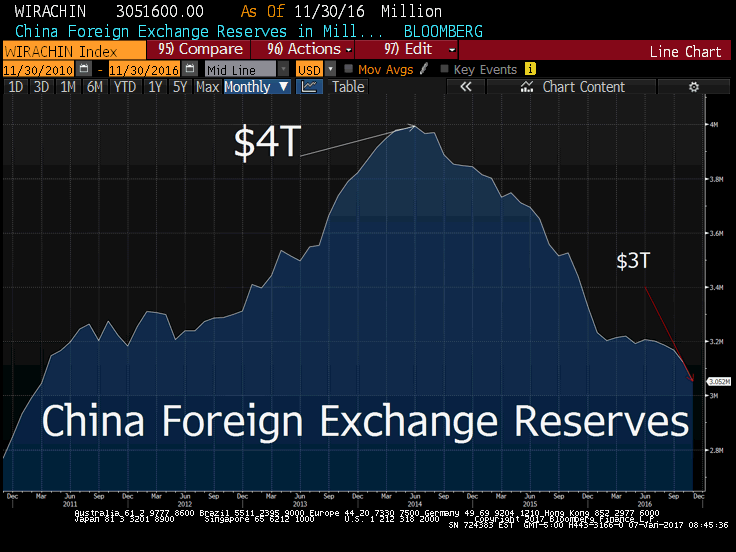
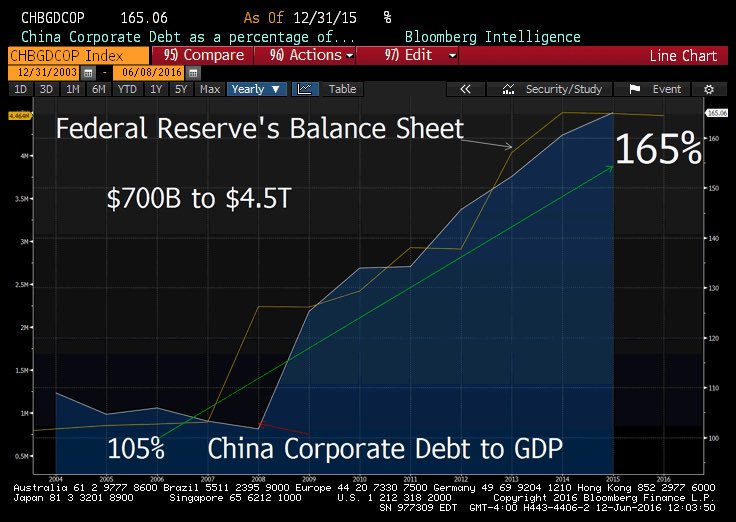
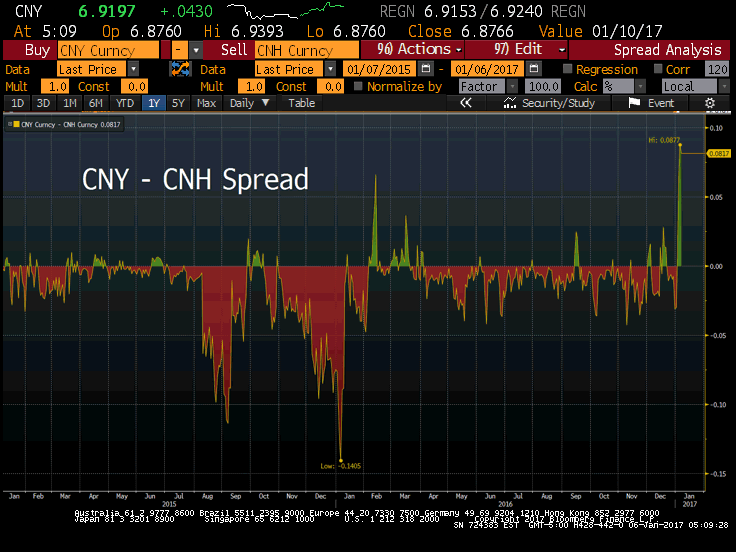
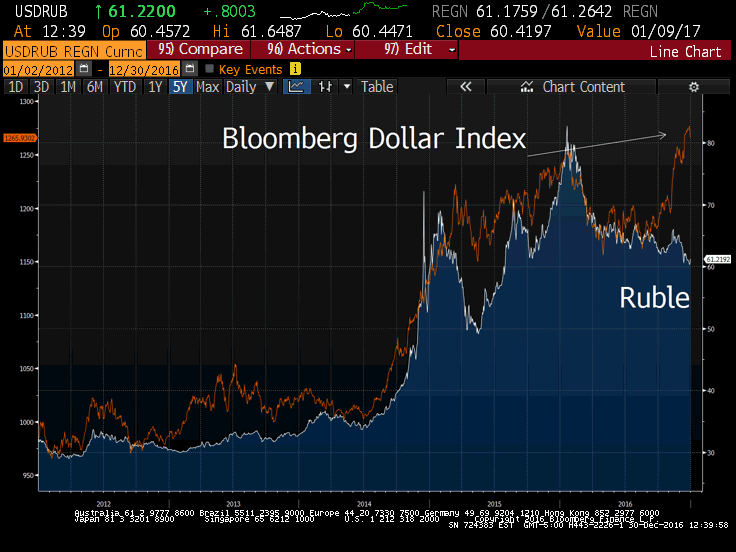



 As a % of GDP, the U.S. trade deficit is still in a long term secular down trend.
As a % of GDP, the U.S. trade deficit is still in a long term secular down trend.
